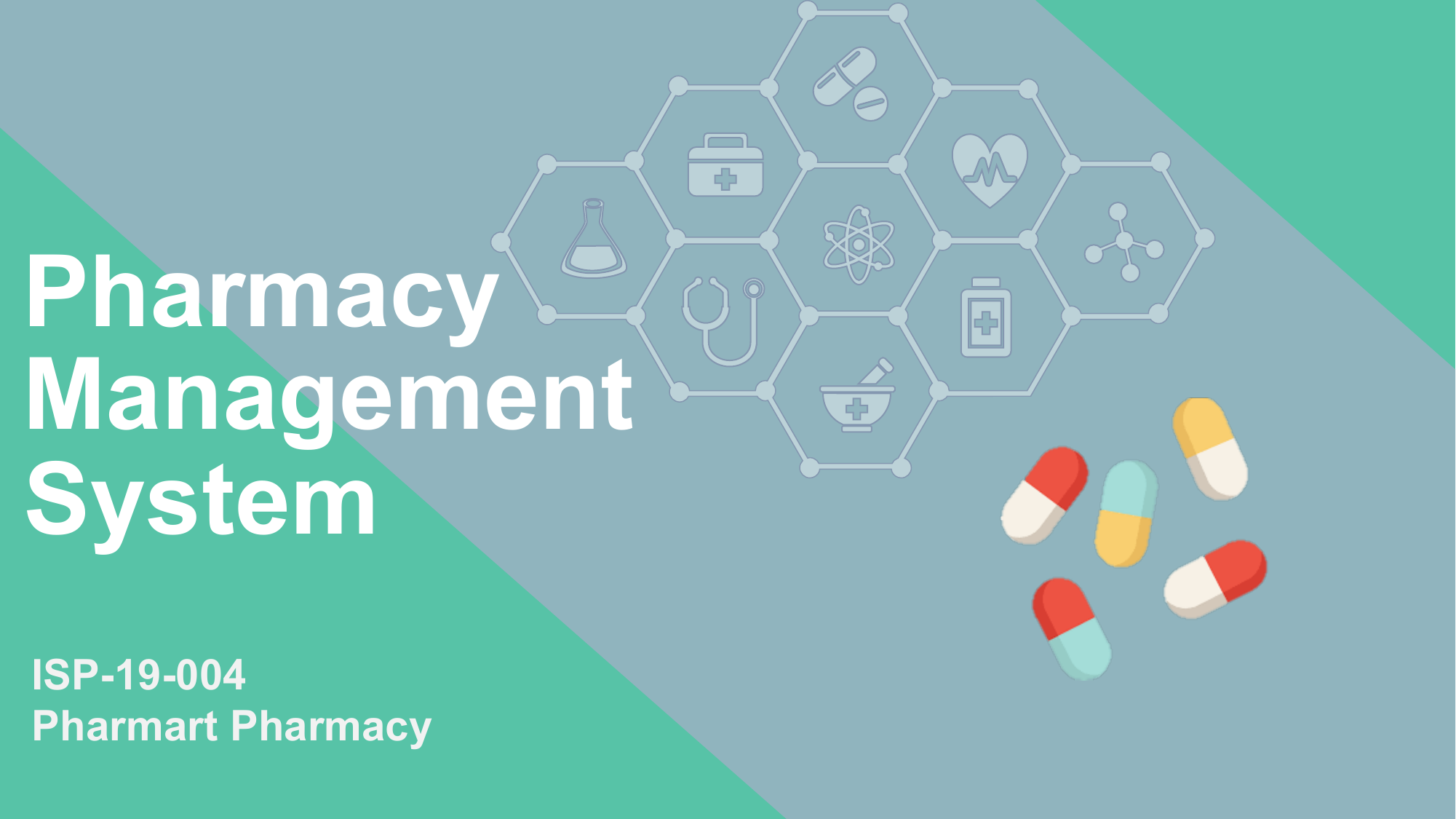Benefits and Types of Pharmacy Management System
Introduction of Pharmacy Management System
A Pharmacy Management System is a computer-based software application that helps pharmacists and pharmacy staff manage the day-to-day operations of a pharmacy. This system streamlines and automates many of the routine tasks that are involved in managing a pharmacy, including inventory management, prescription processing, billing, and customer management.
The Pharmacy Management System typically consists of a central database that stores all relevant information about the pharmacy’s inventory, customers, and prescriptions. The system allows pharmacists to quickly and easily access this information, helping to improve efficiency and accuracy in pharmacy operations.
Additionally, a Pharmacy Management System may also include features for managing prescriptions, such as refill reminders, prescription tracking, and medication therapy management. These features help to improve patient safety and ensure that prescriptions are filled accurately and on time.
Benefits of Pharmacy Management System
There are several benefits to using a Pharmacy Management System, including:
1. Improved efficiency:
A Pharmacy Management System automates many of the routine tasks involved in managing a pharmacy, such as inventory management and prescription processing, which can help to save time and improve overall efficiency.
2. Better accuracy:
With a Pharmacy Management System, pharmacists can quickly and easily access information about inventory, customers, and prescriptions, helping to reduce the risk of errors and improve accuracy.
3. Enhanced patient safety:
The prescription tracking and medication therapy management features of a Pharmacy Management System can help to ensure that patients receive the correct medications in the proper dosages, improving patient safety.
4. Cost savings:
By optimizing inventory management and reducing errors, a Pharmacy Management System can help to save money for the pharmacy.
5. Improved customer service:
With a Pharmacy Management System, pharmacists can quickly access customer information and prescription history, allowing them to provide better customer service and improve patient outcomes.
6. Regulatory compliance:
A Pharmacy Management System can help pharmacies to comply with regulatory requirements, such as those related to inventory tracking and prescription processing.
Types of Pharmacy Management Systems
There are several types of Pharmacy Management Systems, including:
1. Standalone Systems:
Standalone Pharmacy Management Systems are software applications that are installed on a local computer or server. These systems typically include features for managing inventory, processing prescriptions, and managing customer information.
2. Cloud-based Systems:
Cloud-based Pharmacy Management Systems are hosted on remote servers and accessed via the Internet. These systems offer the advantage of being accessible from anywhere with an internet connection and often include additional features such as online prescription refills and patient portals.
3. Integrated Systems:
Integrated Pharmacy Management Systems are designed to work seamlessly with other healthcare systems, such as electronic health record (EHR) systems, to provide a comprehensive healthcare management solution. These systems enable pharmacies to share patient data and coordinate care with other healthcare providers.
4. Open Source Systems:
Open Source Pharmacy Management Systems are software applications that are freely available and can be modified by users to meet their specific needs. These systems offer the advantage of being highly customizable but require more technical expertise to install and maintain.
How to Implement a Pharmacy Management System
Implementing a Pharmacy Management System involves several steps, including:
1. Assessing the pharmacy’s needs:
The first step in implementing Pharmacy Management Software is to assess the pharmacy’s needs and determine what features and capabilities the system should have. This may involve evaluating the pharmacy’s current processes and workflows, identifying areas for improvement, and determining what features are essential for the pharmacy’s operations.
2. Researching and selecting a system:
Once the pharmacy’s needs have been identified, the next step is to research available Pharmacy Management Systems and select a system that meets those needs. This may involve evaluating different systems based on their features, cost, ease of use, and other factors.
3. Installing and configuring the system:
Once a system has been selected, the next step is to install and configure it. This may involve working with the vendor or a technical support team to ensure that the system is set up correctly and configured to meet the pharmacy’s specific needs.
4. Training staff:
After the system has been installed and configured, the next step is to train pharmacy staff on how to use it. This may involve providing hands-on training and developing training materials, such as user manuals and instructional videos.
5. Testing and refining:
Once staff has been trained, the system should be tested to ensure that it is working properly and meeting the pharmacy’s needs.
6. Launching and monitoring:
Once the system has been fully implemented, it should be launched and closely monitored to ensure that it is functioning as expected. Any issues or areas for improvement should be addressed promptly to ensure that the system continues to meet the pharmacy’s needs over time.
Conclusion
In conclusion, a Pharmacy Management System is a valuable tool for modern pharmacies to improve efficiency, accuracy, and patient care. By streamlining and automating many of the routine tasks involved in managing a pharmacy, such as inventory management, prescription processing, and billing, a Pharmacy Management System can help pharmacies to operate more efficiently, reduce errors, and save time and money.
There are several types of Pharmacy Management Systems available, including standalone, cloud-based, integrated, and open-source systems, and the type that is most appropriate for a particular pharmacy will depend on a variety of factors, including the size of the pharmacy and the specific needs and goals of the pharmacy.
Implementing a Pharmacy Management System requires careful planning, research, and collaboration with the vendor or technical support team, as well as ongoing monitoring and refinement to ensure that the system is meeting the pharmacy’s needs and providing value over time. Overall, a well-designed and well-implemented Pharmacy Management System can help pharmacies to improve patient care and outcomes, provide better customer service, and operate more efficiently and effectively.
What are the requirements for a pharmacy management system?
The requirements for a pharmacy management system may vary depending on the specific needs of the pharmacy but generally include features such as inventory management, prescription processing, patient record management, billing and invoicing, reporting and analytics, and security and compliance measures. The system should also be user-friendly, easily customizable, and integrated with other healthcare systems.
What is the function of the pharmacy system?
The function of a pharmacy system is to manage various aspects of a pharmacy’s operations, such as inventory management, prescription processing, patient record keeping, billing and invoicing, and reporting and analytics. It helps pharmacies streamline their workflow, reduce errors, and improve patient safety and care by providing a centralized platform for managing various tasks and data. Additionally, a pharmacy system can assist with compliance requirements and regulations, such as HIPAA and DEA regulations, to ensure that the pharmacy is operating legally and securely.
What are the features of a pharmacy management system?
The features of a pharmacy management system may vary depending on the specific software but generally include:
- Prescription processing and management
- Inventory management and tracking
- Patient record management
- Billing and invoicing
- Reporting and analytics
- Drug interaction checking
- Refill requests and reminders
- Integration with insurance providers
- Barcode scanning and labeling
- HIPAA and DEA compliance measures
- Customizable user interface
- Multi-user access and permissions
- Security and data backup measures
Why is a pharmacy management system important?
A pharmacy management system is important because it streamlines various pharmacy operations, such as inventory management, prescription processing, patient record keeping, and billing, among others. It helps improve the efficiency of the pharmacy workflow, reduces errors, and improves patient safety and care by providing a centralized platform for managing various tasks and data. Additionally, a pharmacy management system can assist with compliance requirements and regulations, such as HIPAA and DEA regulations, to ensure that the pharmacy is operating legally and securely.
How do you create a pharmacy management system?
Creating a pharmacy management system involves several steps, including:
- Identifying the requirements and goals of the system
- Designing the system architecture and user interface
- Developing the software using programming languages and frameworks
- Integrating the system with relevant healthcare systems and technologies
- Testing the system for functionality, usability, and security
- Deploying the system in the pharmacy, providing training to staff, and offering technical support
- Continuously updating and maintaining the system to ensure it remains relevant and secure.
What are the basic modules of the pharmacy management system?
The basic modules of a pharmacy management system include:
- Prescription processing and management
- Inventory management and tracking
- Patient record management
- Billing and invoicing
- Reporting and analytics
- Drug interaction checking
- Refill requests and reminders
- Integration with insurance providers
- Barcode scanning and labeling
- HIPAA and DEA compliance measures
- Customizable user interface
- Multi-user access and permissions
- Security and data backup measures
What is the scope of the pharmacy management system?
The scope of a pharmacy management system includes managing various aspects of pharmacy operations, such as prescription processing, inventory management, patient record keeping, billing and invoicing, and reporting and analytics. The system can help pharmacies streamline their workflow, reduce errors, and improve patient safety and care by providing a centralized platform for managing various tasks and data. Additionally, a pharmacy management system can assist with compliance requirements and regulations, such as HIPAA and DEA regulations, to ensure that the pharmacy is operating legally and securely. The scope of the system can be expanded to include additional modules or functionality depending on the specific needs of the pharmacy.
What is the conclusion of the pharmacy management system?
In conclusion, a pharmacy management system is an essential tool for managing various aspects of pharmacy operations, such as prescription processing, inventory management, patient record keeping, billing and invoicing, and reporting and analytics. It helps pharmacies streamline their workflow, reduce errors, and improve patient safety and care by providing a centralized platform for managing various tasks and data. Additionally, a pharmacy management system can assist with compliance requirements and regulations, such as HIPAA and DEA regulations, to ensure that the pharmacy is operating legally and securely. Overall, a pharmacy management system is a valuable investment for any pharmacy looking to improve efficiency, accuracy, and patient care.
What is the problem statement of the pharmacy management system?
The problem statement of a pharmacy management system typically relates to the challenges and inefficiencies faced by pharmacies in managing various aspects of their operations, such as inventory management, prescription processing, patient record keeping, billing, and compliance requirements. Some common problems include manual processes that are prone to errors, an inefficient workflow that results in long wait times for patients, difficulties in managing inventory and tracking expired drugs, and challenges in complying with regulations such as HIPAA and DEA. A pharmacy management system is designed to address these challenges and provide a more efficient and streamlined platform for managing pharmacy operations.
What are the limitations of the Pharmacy Management System?
Some limitations of pharmacy management systems include:
- Initial costs and ongoing maintenance expenses can be high for smaller pharmacies.
- Some systems may not be user-friendly, requiring extensive training for staff to use effectively.
- Integration with other healthcare systems and technologies can be challenging.
- Limited customization options in some systems may not fully meet the specific needs of a pharmacy.
- Technical issues such as software glitches and system crashes can cause disruptions to workflow.
- Limited access to reliable internet can impact the functionality of cloud-based pharmacy management systems.
Contact us for More Services, Which we Provide
7) Chat Service
10) Web Hosting
12) Video Designing
Contact Us
+91-9380797662
info@emazel.com
Author


